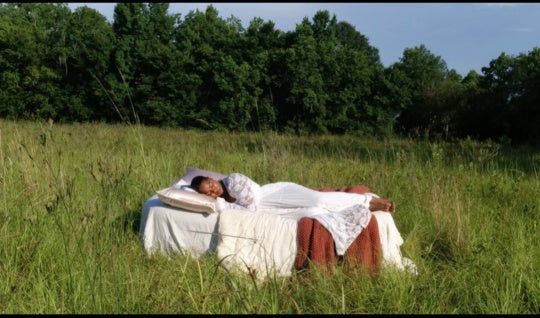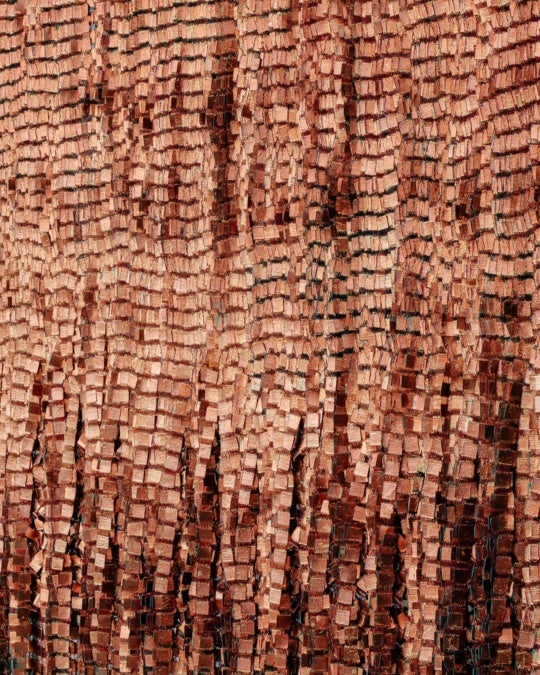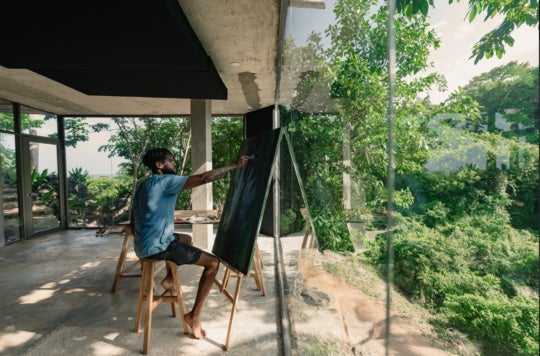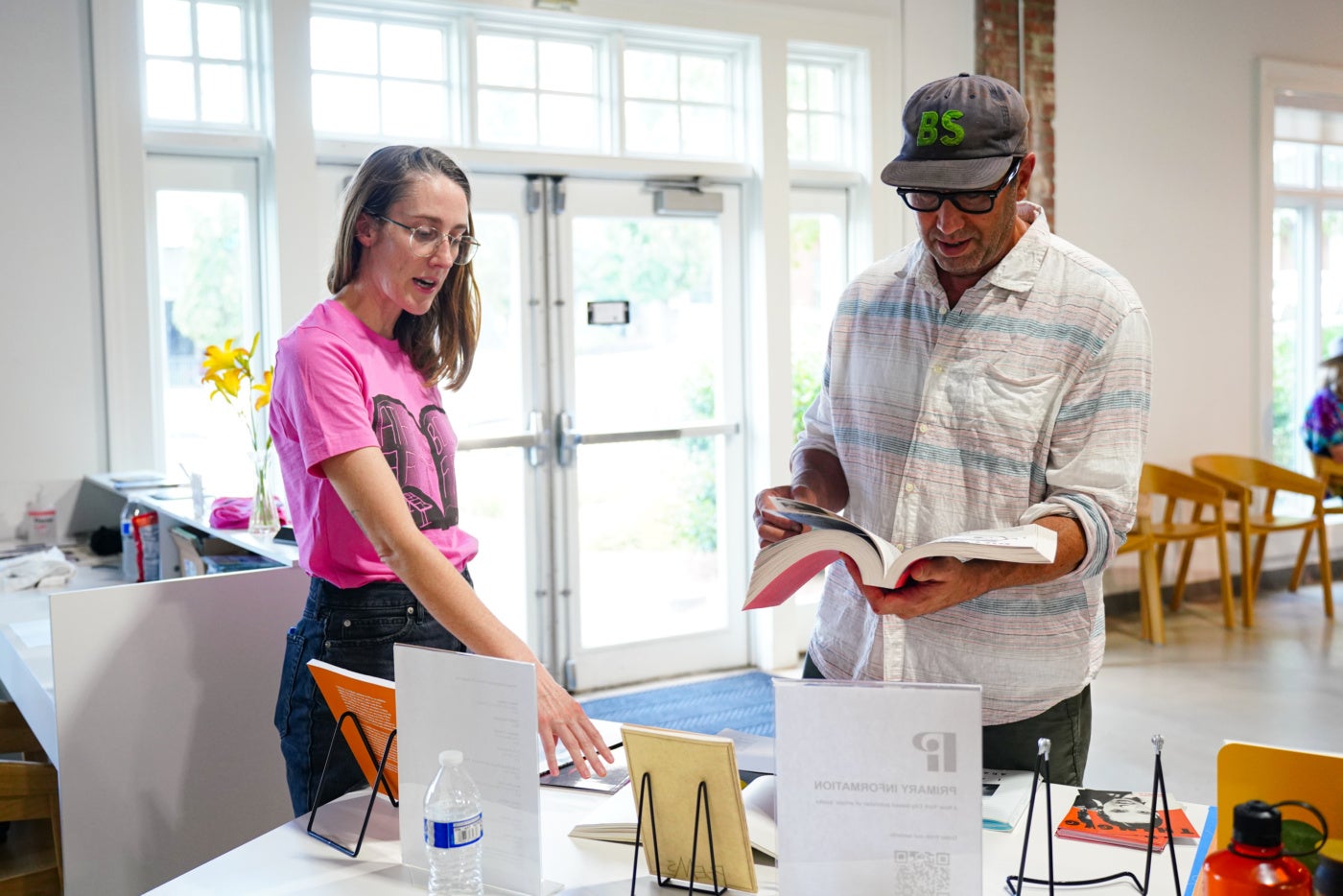
To an art book lover, entering the Art Library at the University of Georgia’s Lamar Dodd School of Art feels like coming home. Carefully assembled columns of art books line the walls, and kraft archival boxes teeming with zines perch along the front desk. This scene is backlit by a wall-to-ceiling view of the campus’s sweetgums and scarlet oaks. Adjacent to the windows is an antique card catalog cabinet holding the library’s zine-making supply. Catty-corner lays a long table of scanners and resource computers. The library is not full, but not lacking; the selections are curious and thoughtful.
I came to know Lindsey Reynolds, the Art Librarian and Director of Graduate Studies, through zines. We met at the Athens Art Book Fair, an annual Lamar Dodd School of Art program coordinated by Reynolds. I sat down with her a few weeks after the third iteration of the fair. It was summer and the halls were empty, but the essence of the spring semester still lingered. In addition to Christee Imogen Henry, the Art Library Coordinator, there was only one visitor in the space during our conversation. Even with the absence of students and faculty, I could feel the energy, passion, and thorough care Lindsey instills in the library.
This interview was edited for length and clarity.
Madeline Benfield: How did you get into artists books, zines, archiving, and collecting?
Lindsey Reynolds: In 2011, I did an internship at the New York Art Resources Consortium (NYARC), which is made up of the Brooklyn Museum, the Museum of Modern Art, and the Frick Collection. One of the other things I did for that internship was participate in the Contemporary Artists’ Book Conference, which was a librarian-led conference, attached to the New York Art Book Fair, that Printed Matter puts on. I was on that planning committee for about four or five years, and that was my introduction into artists’ books. It was really the New York Art Book Fair, which is quite an introduction.
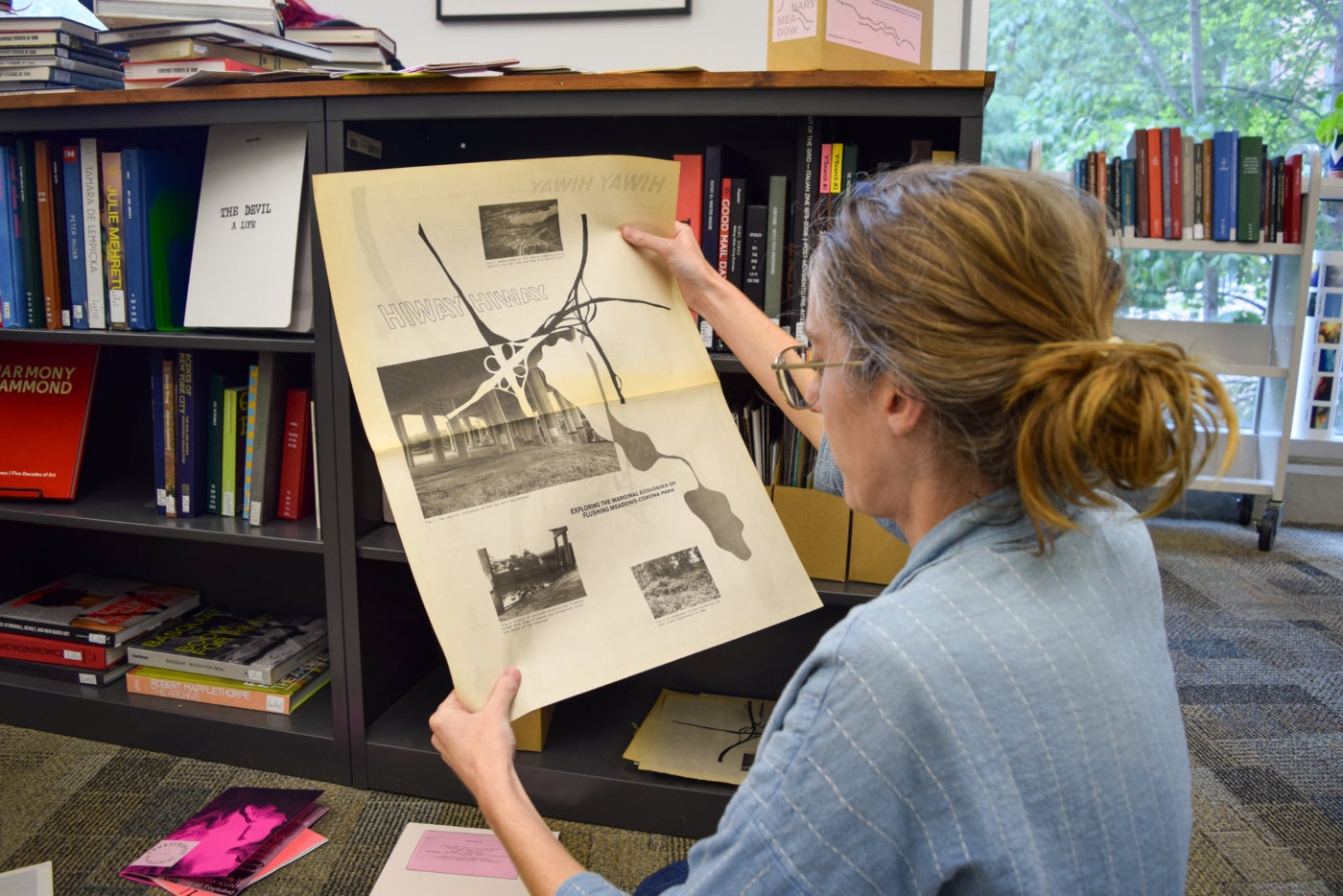
MB: That is a huge introduction. What brought you to the South, and what led you to the Art Librarian position at the University of Georgia?
LR: Before I came to Georgia, I was a librarian at art museums. Most recently, I worked at the Birmingham Museum of Art, and before that, I was at the Whitney Museum in New York. I had a brief stint as an archivist at an architecture firm in Atlanta and did some other internships at New York art museums.
I went to art school for undergrad and got a painting degree, and then I went to library school and got a Masters in Library Sciences in 2011. After graduating, I started working in museum libraries, and at some point, this job came up. The art library didn’t exist yet. The job was to create it, which was appealing.
MB: How did the structure and system of the art library come together?
LR: I spent a lot of time figuring out what the art library should be. It took a year to make sense of what resources students needed, what people wanted out of the space, and how to make it all work. There are two other branch libraries like this at UGA—the music library and the curriculum materials library, and they both have a distinct collection that lives within those libraries. For us, it was trickier because all the art books were at the main library. UGA has a huge collection of art books—there are bajillions. I have this fantasy of organizing students to check out all of the art books at once and then stack them in here to see if they would fit in the art library. Figuring out what was going to be in the art library versus in the main library was a muddy question for a while.
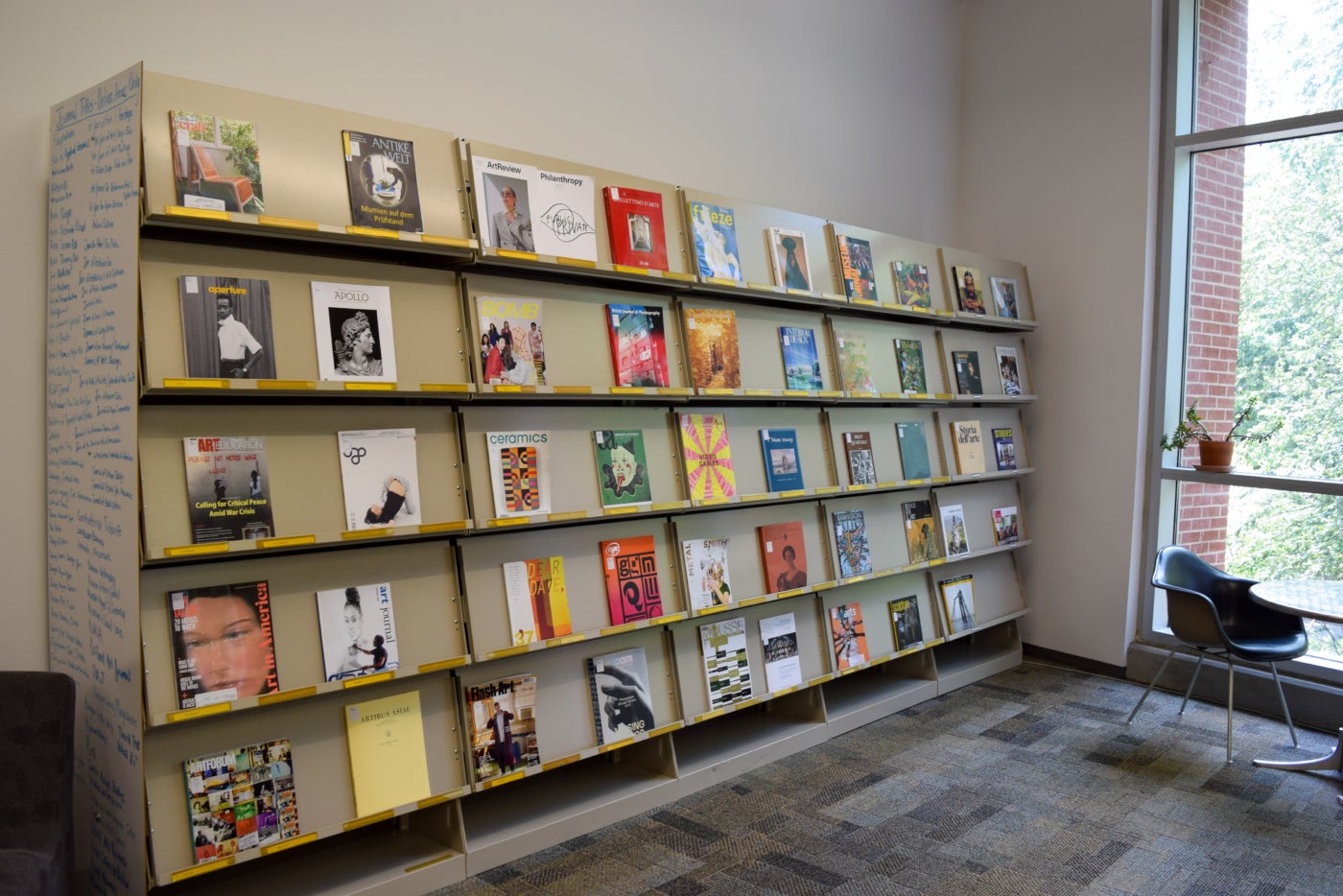
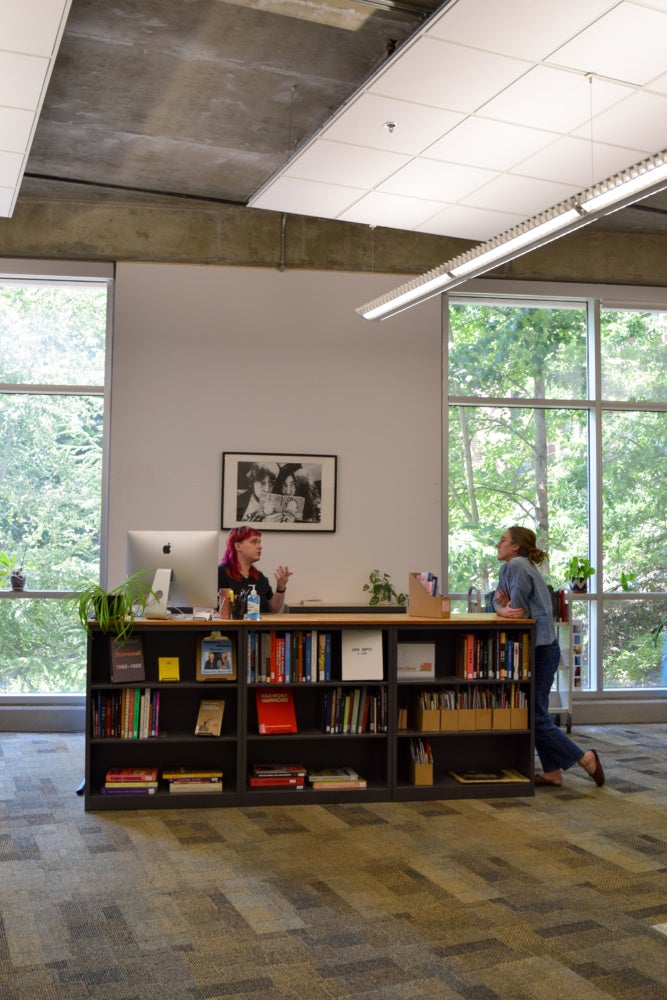
What we landed on is that not that much lives here permanently. Current periodicals live here, but once there’s enough to bind them, they go to the main library. New books rotate through the art library before they go to the main library. We have course reserves, which are different every semester depending on what classes are being taught. The only things we have here permanently are a small reference section, faculty publications, and the zine library. Everything else rotates.
One of the things I did before the library was open was commission a sculpture student to make me a sandwich board that books could sit on. Using this, I started a residency called The Artist Is Reading. The residency happens mostly when people are coming and giving lectures, like our visiting artists, or if there are shows in the gallery, we tie it to those things and then park it all over the school in random places. Our upcoming visiting artist, Aidan Koch, is going to do the residency next. I’ve archived all the selections on a Tumblr page, which is a really funny thing to do.
MB: I think Tumblr is the perfect place to hold that archive. I met Aidan at the Athens Art Book Fair and was blown away by her work. How did the Athens Art Book Fair come about?
LR: How did it come about? I think [Professor of Art] Jon Swindler just walked to my office one day and said, “we should do a book fair.” And I was like, “yeah, we should.” I’ve been thinking about that for a long time, and I’ve been talking to various people around here about it ever since I first came to UGA. There was the Atlanta Zine Fest, of course, but not much else in the Southeast, and especially nothing art book dedicated. We have access to the Athenaeum in the summer, and it felt pretty doable because we weren’t trying to run a venue. We just went for it and thought, we’ll see what happens! And we’re still doing it, along with having the zine collection at the Art Library.
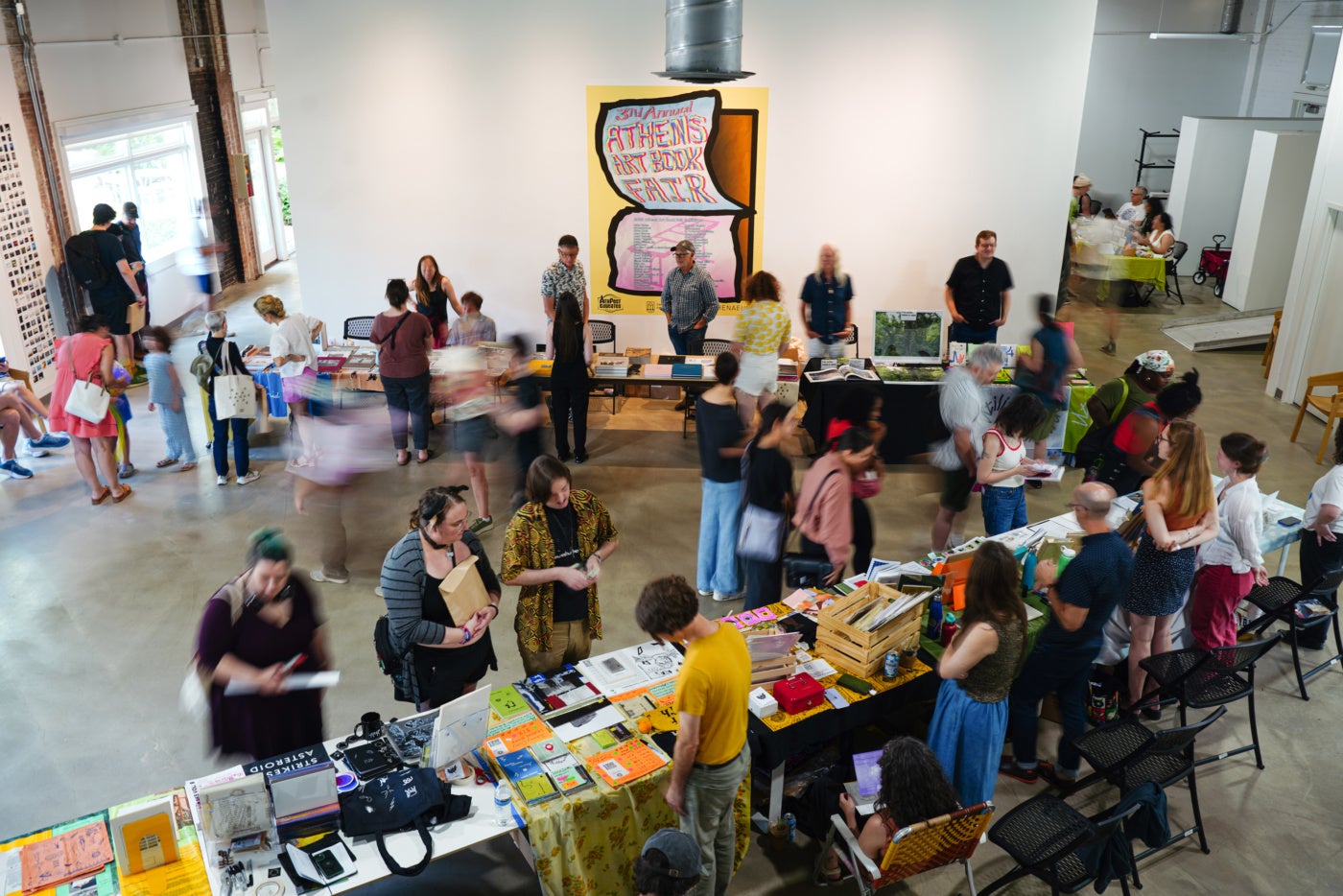
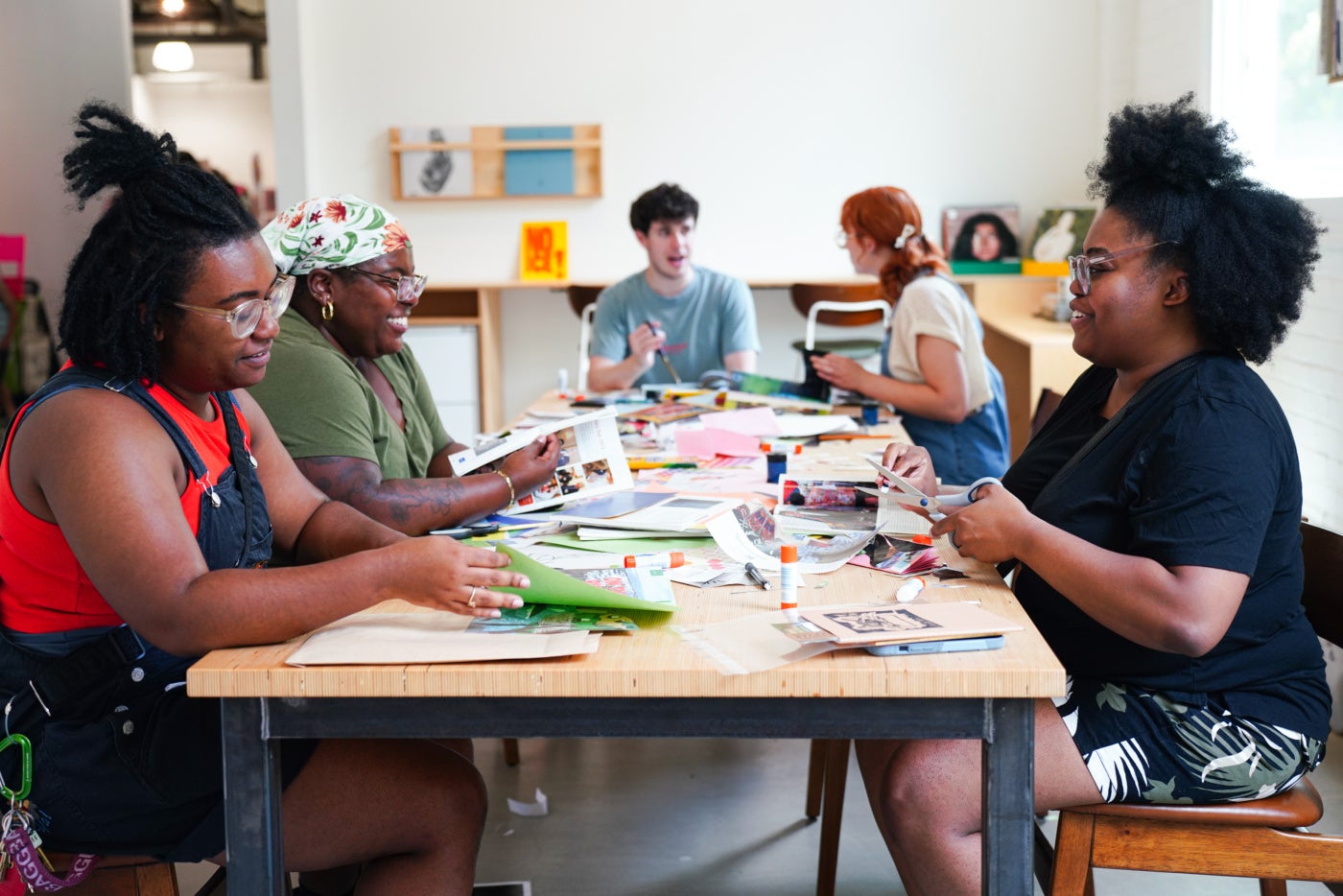
MB: How have you seen those students use the zine library? Do you think the library helped inspire students and classes to make zines, or do you think that’s just part of the broader zeitgeist right now?
LR: When I first started with the zines, it didn’t feel like the zeitgeist. I don’t claim that our zine library recreated that zeitgeist, but it was just good timing. Zines are back in vogue at the moment; I’ve seen that happen every eleven years or so. I’ve noticed a lot of published books coming out about zines lately, which is always an interesting marker of what people are broadly paying attention to. If they’re paying attention to it long enough for someone to want to publish a book about it, that’s saying something.
The Brooklyn Museum recently had a big artist zine exhibition, so we have that catalog now. That generated some interest for sure, along with having the book fair in town. We had to get two copies of the catalog because it was getting checked out so much when it first came out, which is a huge victory. We usually don’t buy duplicate books here unless they’re really high use.
MB: That catalog is an amazing resource. How do you curate the new selections at the library, and what contributes to that process?
LR: I select all the art books that UGA buys now—that’s part of my job. Everything that we buy comes here before it goes to the main library. Any art book classified in the Library of Congress as fine arts comes here temporarily. We keep it depending on if it gets checked out or not for six to 18 months, and then it goes to the main library after that.
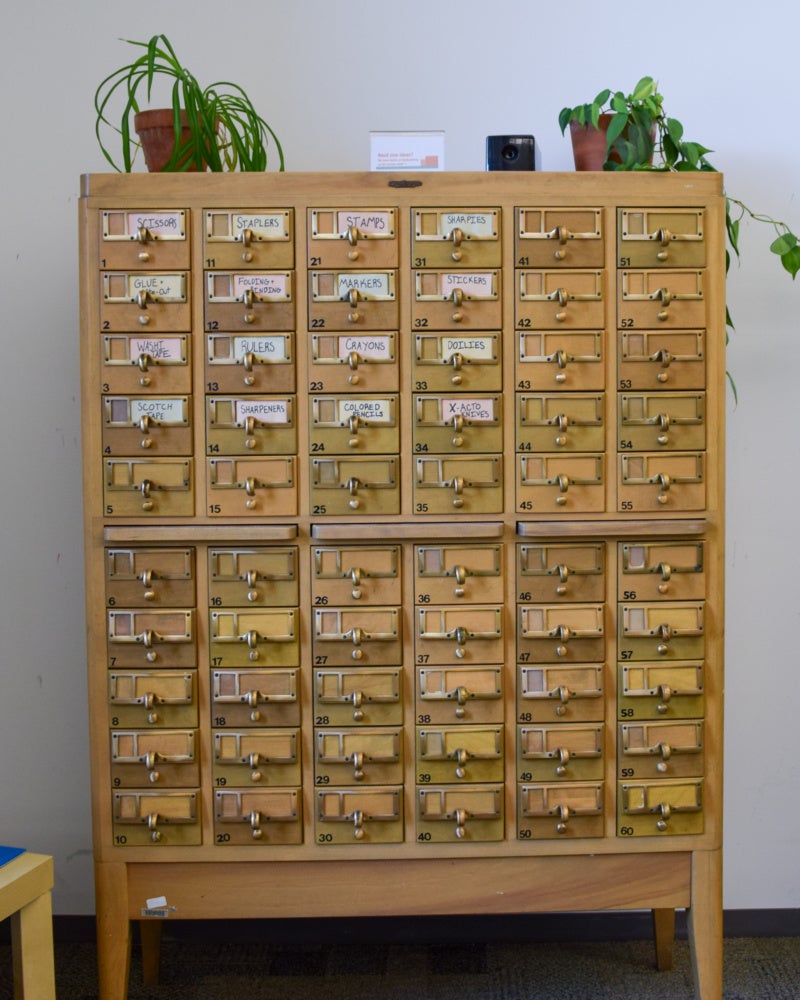
MB: How have you seen the art library be used by students? Is it mainly for research for their own work or learning about artists?
LR: Supporting their coursework is a big part of what we do. The art history classes utilize the course reserves a lot. The main purpose is being a convenient space to pick up books; people come in here all day long and don’t necessarily hang out. But a fun thing that happens is, as they turn to leave, they see the magazines, walk over, pick one up, sit down on the couch, and an hour later they’re still there.
Zines are back in vogue at the moment; I’ve seen that happen every eleven years or so.
The only things you can’t check out here are the zines and the periodicals. We do check out zines for classes a lot. Students come in here and use the maker space and zine making supplies a lot, which I love to see.
MB: Can they use the zine making supplies on their own time, or is it mainly during workshops?
LR: Students can use them at any time, but classes do zine projects now. A class will come in here and look at zines, and then those students will come back and use our supplies while they’re working on assignments. A lot of times, they’ll then bring us their finished zines to add to the library. We don’t have a budget for the zine library, so it’s all donation based from Dodd students and faculty.
We have over 400 zines in the library. I think I’ve broken my own rule and brought some zines that I bought at a book fair. You gotta break rules sometimes.
MB: And zines are not one for rules.
*
I took a note from Reynolds’ book and asked her to curate her own version of The Artist Is Reading. Below are her selections.
The Librarian Is Reading
Modern Nature by Derek Jarman
Honey from a Weed by Patience Gray
Belonging by bell hooks
The Art of the Commonplace by Wendell Barry
Turn: The Journal of an Artist by Anne Truitt
Sitt Marie Rose by Etel Adnan
Manifesto for Maintenance Art by Mierle Laderman Ukeles
Man vs. Corpse by Zadie Smith
Records by Artists: 1950-1990 by Giorgia Maffei
The Blonde Woman by Aidan Koch
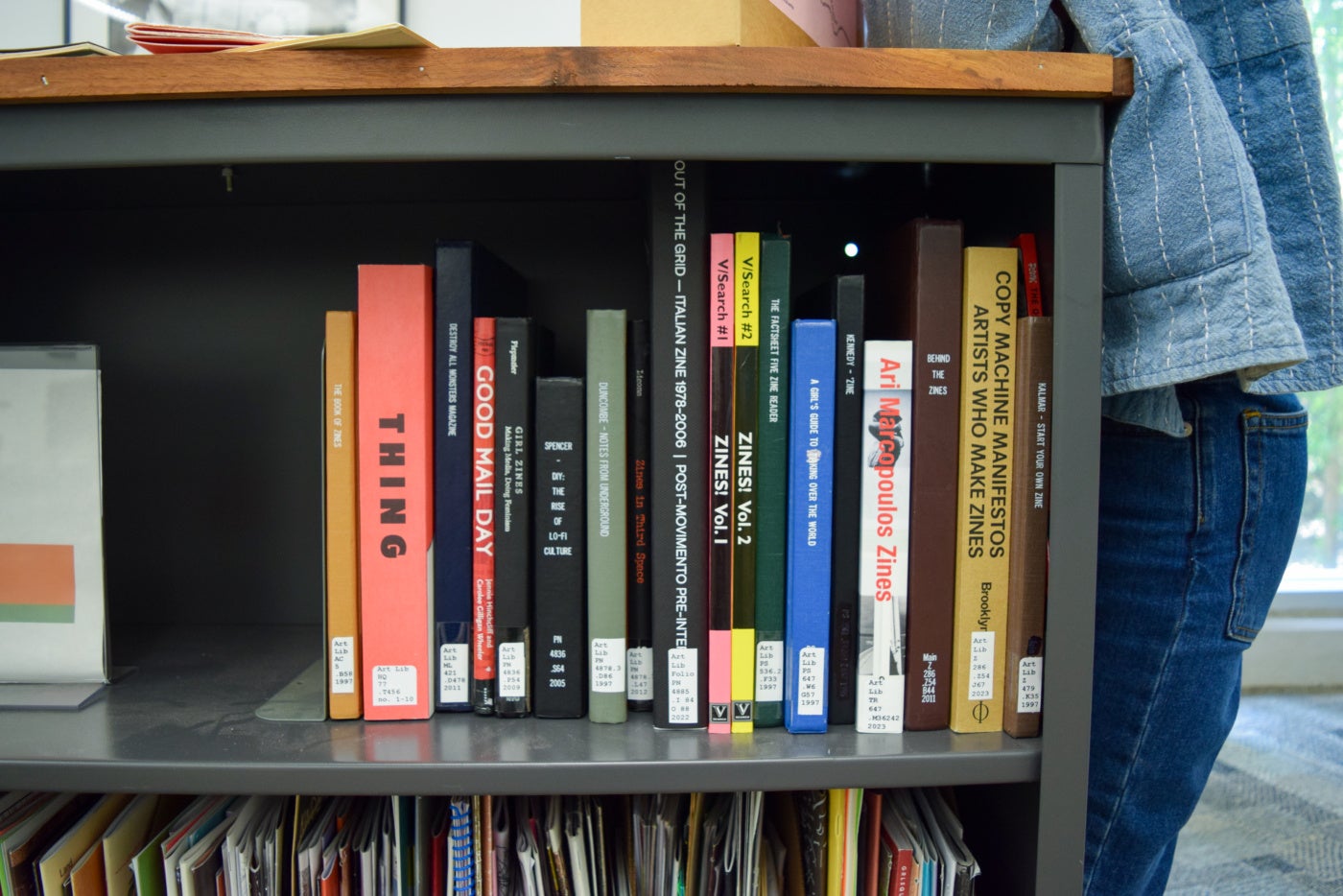
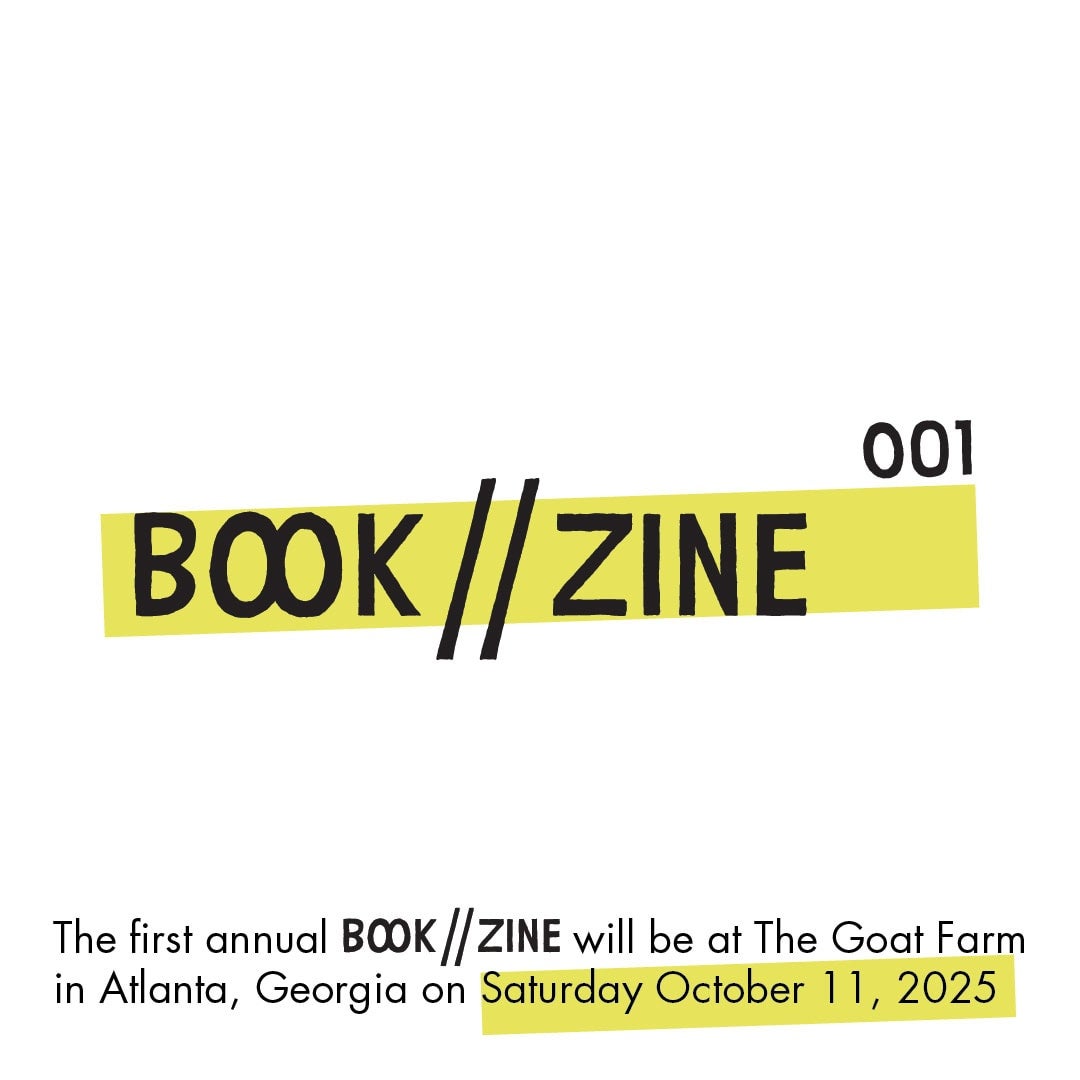
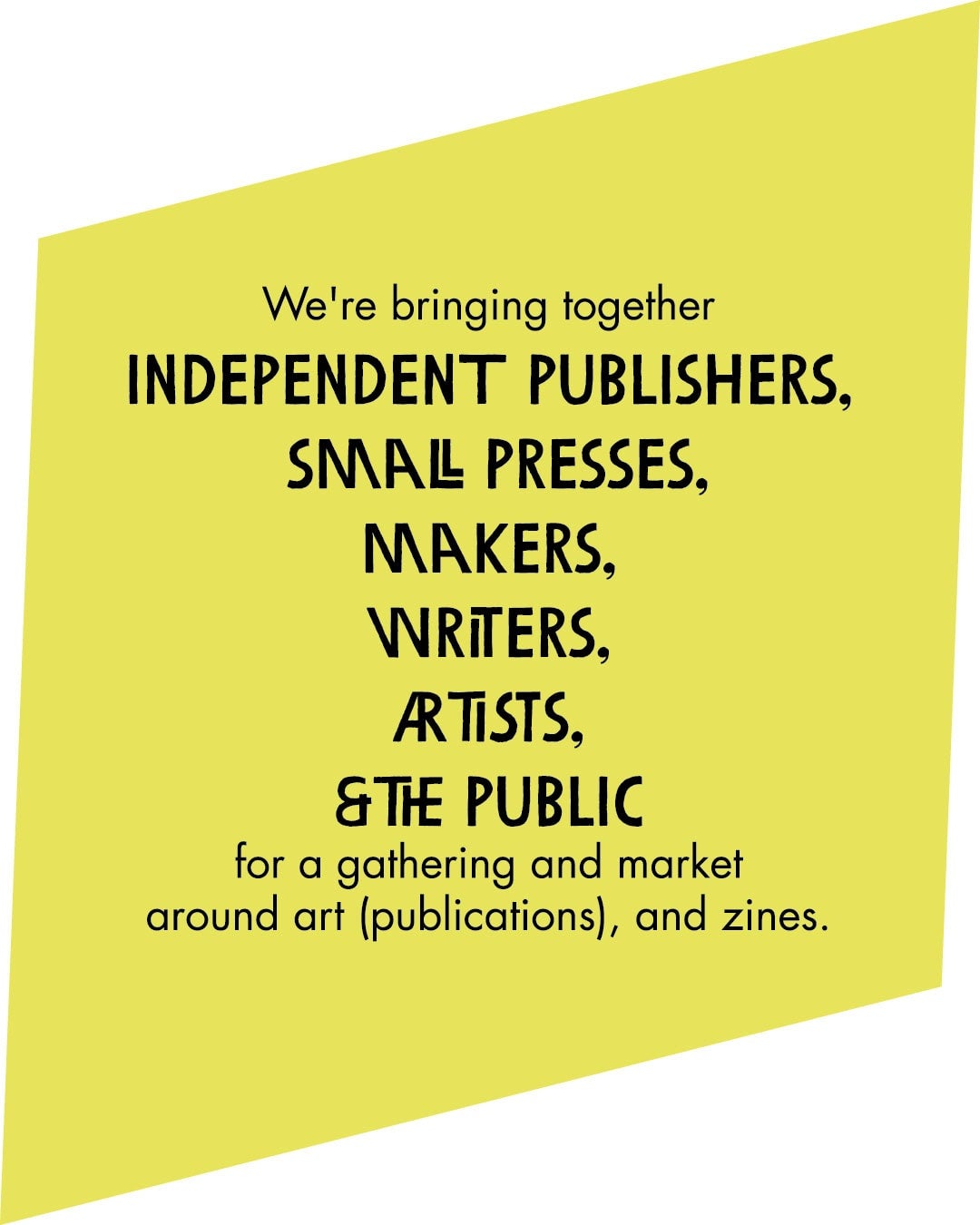
Book//Zine, Burnaway’s first annual art book and zine fair, will be held at The Goat Farm in Atlanta, Georgia on Saturday, October 11, 2025 from 11AM-5PM. We’re bringing together independent publishers, small presses, makers, writers, artists, and the public.
RSVP below to learn more!

